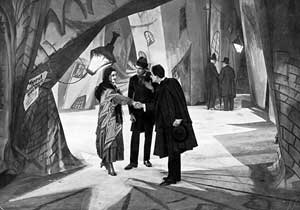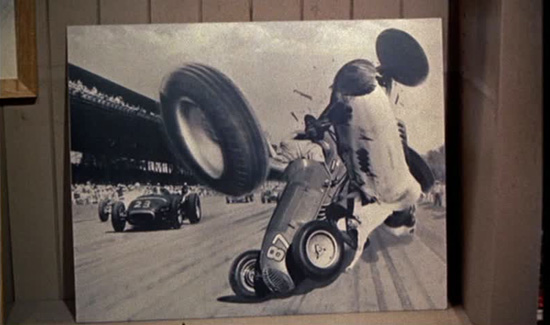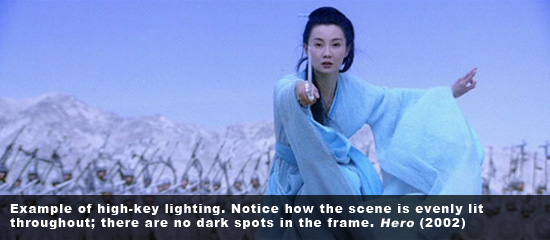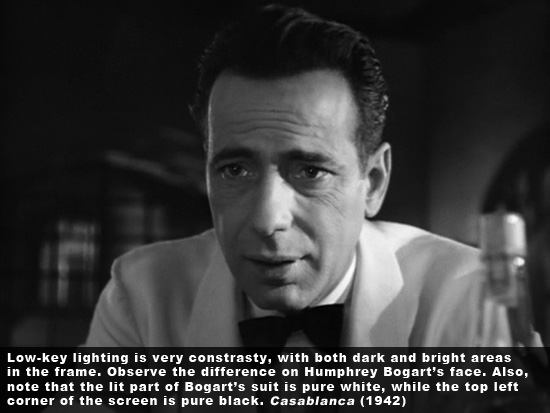The arrangement of everything that appears in the framing – actors, lighting, décor, props, costume – is called mise-en-scène, a French term that means “placing on stage.” The frame and camerawork are also considered part of the mise-en-scène of a movie. In cinema, placing on the stage really means placing on the screen, and the director is in charge of deciding what goes where, when, and how. David A. Cook, in his book A History of Narrative Film, points out how a mise-en-scène is formed by all the elements that appear “within the shot itself, as opposed to the effects created by cutting.” In other words, if it’s on the screen and if it’s a physical object recorded by the camera, then it’s part of the mise-en-scène.
Even though many professionals are involved in its creation, the director is the one who oversees the entire mise-en-scène and all of its elements. Not just that, but during the early stages of pre-production, the director or his AD sits down with set designers, prop masters, location managers, costume designers, and scenic artists to determine the look and feel intended.
 In some instances, the mise-en- scène is designed to evoke emotions that permeate the whole movie. For example in the German expressionist film, The Cabinet of Dr. Caligari (1920), distorted shapes and claustrophobic scenery are implemented to disturb the audience and enhance the horror.
In some instances, the mise-en- scène is designed to evoke emotions that permeate the whole movie. For example in the German expressionist film, The Cabinet of Dr. Caligari (1920), distorted shapes and claustrophobic scenery are implemented to disturb the audience and enhance the horror.
Mike Nichols’ The Graduate (1967) has been praised by its amazing, colorful, and multi-layered visual design. For this reason, the following segments will shed light on many scenes from The Graduate but also from other pictures.
Set Design
The set design refers to the decor of the set, or how it’s dressed, comprising mainly of the furniture, props, and the set itself. Instead of just placing objects here and there, the director must be savvy to fathom how these elements may bear significance in a deeper level, while also emphasizing themes, creating meanings, and provoking thoughts.
To illustrate: an early scene from The Graduate (1967) opens with a close-up of Benjamin Braddock (Dustin Hoffman) alone on his bed. Behind him is a fish tank, which symbolically represents Ben’s entrapment in a life that he doesn’t want. Later in the movie, Ben finds himself at the bottom of a swimming pool, thus further elaborating on that concept.
In Rear Window (1954), an enlarged photograph placed in the living room offers exposition on the accident that made L.B. Jeffries (James Stewart) handicap:

Lighting
Unarguably one of the film elements that have the greatest power to evoke emotions, lighting must be manipulated by the director to accommodate his or her desires for the movie. In broad terms, the two types of lighting approaches are low-key lighting and high-key lighting.
High-key lighting is often seen in romantic comedies and musicals, encompassing an even lighting pattern and avoiding dark areas in the frame. Everything looks bright with little to no shadow at all. High-key lighting has little dramatic effect itself.

Low-key lighting is often seen in horror movies and thrillers, comprising of a lighting pattern that has both bright and dark areas in the frame. The chiaroscuro (Italian: bright-dark) technique, long used by painters, is characterized by strong contrast, often employed to unnerve the audience.

Note that this terminology is counter-intuitive as low-key lighting is high contrast and high-key lighting is low contrast.
Costume
The obvious purpose of the costume is to dress an actor according to his character. Lawyers wear suits, nurses wear scrubs, and a drifter could wear worn-out shoes, a ragged shirt, and baggy pants.
But, more than that, costuming can also be used to establish someone’s hierarchic level. Regimentals, for instance, bear the status of the person who wears it. And even the color may distinguish an enemy from a friend. In The Good, the Bad, and the Ugly (1966), a comic situation arises when Blondie (Clint Eastwood) heads toward the enemy cavalry that was covered in dust. When the enemy general dusts off his sleeve, his apparently gray uniform turn blue, making it obvious that our beloved protagonist was going into the shark’s mouth.
Costuming may also be used to emphasize a theme. In the first scene at the Taft Hotel in The Graduate, Mrs. Robinson wears a fur coat that makes her look like a predator hunting for her prey. Her coat bears a pattern that resembles the fur of a cheetah. Or could it be a cougar?

Location
In Witness (1985), on the day after rejecting Rachel’s (Kelly McGillis) seduction, John Book (Harrison Ford) explains to her why nothing could have happened between them the night before. Quite conveniently, the confrontation takes place in a barn, while Rachel is collecting eggs. The location emphasizes Rachel’s responsibilities as a woman. If they had made love and Rachel had gotten pregnant, she would have had to carry the baby and eventually give birth. Also, during the conversation, John stands outside the barn, thus being physically separated from Rachel by the barn’s door. In this case, the door functions as a metaphor for the social and cultural barriers that keep them apart.
The final confrontation in The Graduate takes place in a church. Ben tries to prevent Elaine (Katherine Ross) from getting married, but he arrives too late. Nonetheless, when Elaine sees him, she sprints to him, and they run away. When the couple is cornered by infuriated parents and relatives, Ben starts swinging a cross to avoid them. As they exit, Ben uses the cross to hold the church’s doors shut.
The prop (cross) and location (church) offer a comment on religious institutions, perhaps implying that Elaine’s parents are trapped by traditional beliefs and practices.

Be First to Comment